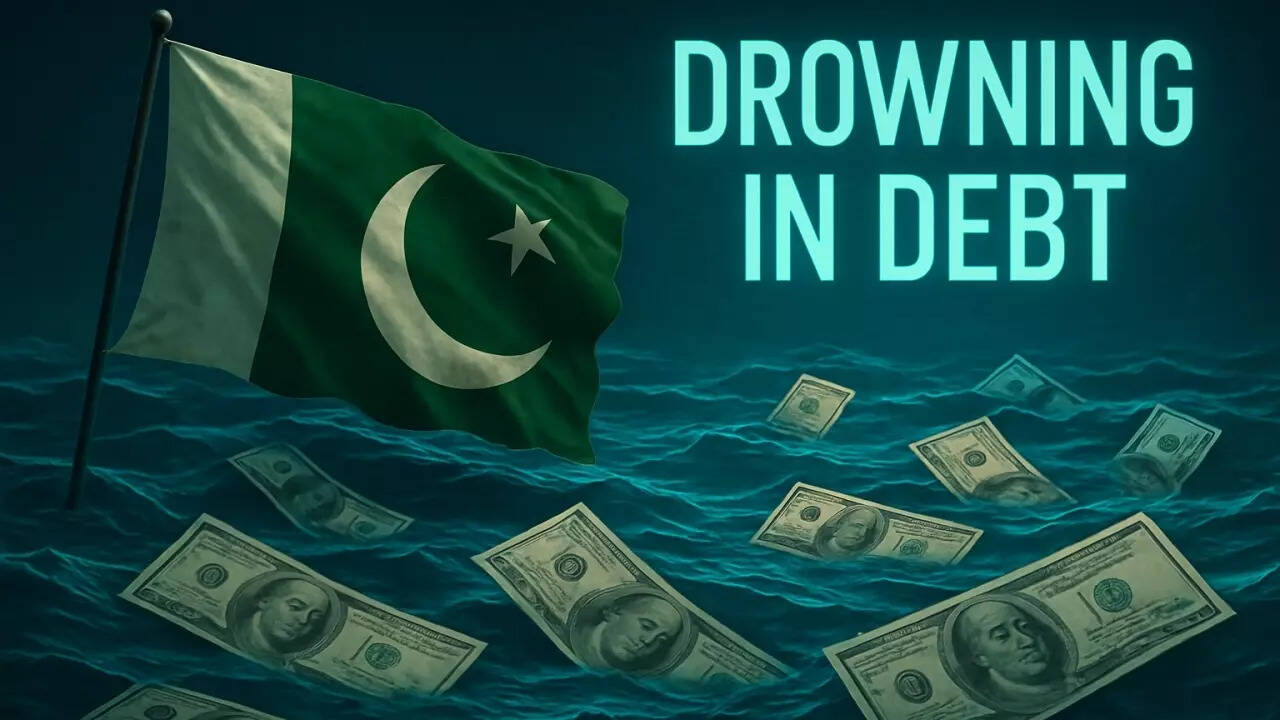Pakistan’s reliance on foreign loans surged to $26.7 billion in the last fiscal year, with a significant portion used for debt rollovers rather than project financing. The nation heavily depends on borrowing from multilateral institutions and countries like Saudi Arabia and China to maintain reserves.
Pakistan’s Debt Dilemma: Is There a Way Out?
Pakistan’s economy is facing a formidable challenge: a mountain of debt that seems to grow taller each year. The latest figures paint a stark picture, with the nation reportedly securing a record $26.7 billion in loans during the last fiscal year. That’s a hefty sum, and it begs the question: how did Pakistan get here, and more importantly, what can be done to reverse course?
The problem isn’t just the amount of debt, but also the unsustainable levels it has reached. Think of it like a homeowner who keeps refinancing their mortgage to make the payments, without ever actually paying down the principal. Eventually, the interest alone becomes crippling. That’s the situation Pakistan is finding itself in. Each new loan is often used to service existing debt, creating a vicious cycle of dependency.

Where Did All This Debt Come From?
Several factors have contributed to Pakistan’s debt woes. Years of fiscal mismanagement, including low tax revenues and high government spending, have played a significant role. Successive governments have struggled to implement meaningful reforms that would address these underlying issues. Political instability hasn’t helped either. Frequent changes in leadership and policy disrupt long-term economic planning, making it harder to attract foreign investment and build a stable financial foundation.
Furthermore, external shocks, like rising global commodity prices and fluctuating exchange rates, have added to the pressure. Pakistan is heavily reliant on imports, particularly for energy, so any increase in global prices directly impacts the country’s balance of payments and increases its borrowing needs.
The Impact on Everyday Pakistanis
The consequences of this escalating debt are felt by ordinary Pakistanis. Increased inflation erodes purchasing power, making it harder for families to afford basic necessities. Government austerity measures, often implemented as conditions for receiving loans, can lead to cuts in essential social services like education and healthcare. This further exacerbates inequality and hinders long-term human development.
The unsustainable levels of debt also cast a long shadow over the future. It limits the government’s ability to invest in critical infrastructure projects, such as roads, power plants, and water management systems, which are essential for economic growth and improving the quality of life for its citizens. It also reduces the resources available for education, healthcare and other vital public services.
Navigating the Debt Crisis: Potential Solutions
So, what can be done to address this complex situation? There’s no easy fix, but a multi-pronged approach is essential. One critical step is to improve fiscal management. This means increasing tax revenues through reforms that broaden the tax base and reduce tax evasion. It also requires controlling government spending and prioritizing investments that generate long-term economic returns.
Boosting exports is another key strategy. Pakistan has a diverse economy with the potential to export a wider range of goods and services. Investing in export-oriented industries, improving trade infrastructure, and pursuing favorable trade agreements can help increase export earnings and reduce the trade deficit.
Structural reforms are also crucial. This includes improving governance, reducing corruption, and creating a more business-friendly environment to attract foreign investment. A stable and transparent regulatory framework is essential for fostering investor confidence and promoting sustainable economic growth.
Finally, debt restructuring or relief measures may be necessary. This could involve negotiating with creditors to reschedule debt payments, reduce interest rates, or even forgive some debt altogether. Such measures can provide much-needed breathing room, allowing the government to focus on implementing reforms and stimulating economic growth. We need to discuss better economic development and wealth-building strategies with our global partners; check out this article on [sustainable development goals](internal-link).
A Difficult Road Ahead
Pakistan’s debt dilemma is a serious challenge that requires bold and decisive action. There are unsustainable levels of borrowing that can further exacerbate economic stability. It’s a long and complex journey, but with strong political will, sound economic policies, and the support of the international community, Pakistan can overcome its debt burden and build a more prosperous and sustainable future. The key is to shift away from short-term fixes and towards long-term solutions that address the root causes of the problem. Only then can Pakistan truly break free from the cycle of debt and unlock its full economic potential.







